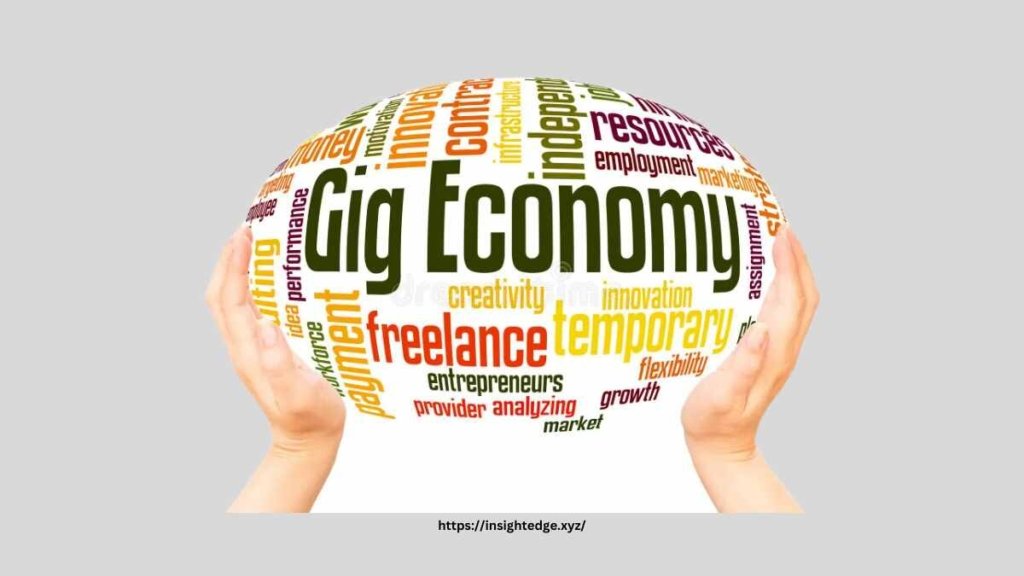Gig Economy Evolution, as the gig economy is rapidly transforming how we work, offering flexibility and freedom like never before. Whether you’re freelancing, driving for a rideshare app, or picking up remote gigs, this new way of working has created opportunities for millions across the globe.
Defining the Gig Economy
At its core, the gig economy refers to a labor market where short-term, flexible jobs are the norm, often facilitated by digital platforms. Workers in the gig economy, often called freelancers or independent contractors, perform tasks ranging from graphic design to food delivery without being tied to traditional 9-to-5 employment.
Freelance Work Trends
Rise of Freelancing
Freelancing has exploded in recent years, with more individuals choosing to ditch traditional employment for more flexible, self-directed work. In Gig Economy Evolution, Many are attracted by the ability to manage their own schedules and work from anywhere in the world.
Popular Freelancing Industries
Industries such as digital marketing, writing, graphic design, and tech development are leading the charge in freelancing. These sectors thrive in remote environments, allowing freelancers to engage with clients from all corners of the globe.
Remote Gig Opportunities
Work-from-Home Jobs
The shift to remote work has paved the way for countless gig opportunities. Jobs that used to require office attendance can now be performed from the comfort of one’s home. For Gig Economy Evolution, From virtual assistants to online tutors, remote gigs have become increasingly diverse.
Technology’s Role in Remote Gigs
Technology is the backbone of the remote gig economy. Platforms like Zoom, Slack, and Upwork enable freelancers and gig workers to connect with clients seamlessly, bridging geographical gaps and creating a global marketplace for skills.
Platform-Based Work Models
How Platforms Drive the Gig Economy
Digital platforms such as Uber, Fiverr, and TaskRabbit have revolutionized how we connect workers to opportunities. These platforms act as middlemen, enabling workers to find gigs easily and providing businesses with access to a vast pool of talent.
Popular Gig Platforms
Platforms such as Upwork, Fiverr, and Airbnb play pivotal roles in connecting freelancers and clients. In Gig Economy Evolution, Whether you’re looking for creative talent or a short-term rental, these platforms have made it simple to find services on demand.
Must Visit: Financial Literacy for Entrepreneurs
Impact of Gig Economy on Labor Market
Changing Workforce Dynamics
The gig economy is shaking up the traditional labor market. Many workers are now choosing flexible gig work over permanent positions, leading to a shift in workforce dynamics. This trend is prompting businesses to rethink their staffing models.
Traditional Employment vs. Gig Work
Unlike traditional employees, gig workers typically don’t receive benefits like health insurance or retirement plans. However, many are willing to trade these for the autonomy and flexibility that gig work offers.
Gig Economy Challenges and Benefits
Challenges for Gig Workers
While the gig economy offers freedom, it also comes with challenges. Gig workers often lack job security, consistent income, and access to benefits. Navigating fluctuating demand and competition can also be tough for freelancers.
Benefits for Workers and Businesses
For workers, the gig economy provides flexibility, independence, and control over their work-life balance. For Gig Economy Evolution or Businesses, on the other hand, benefit from accessing a global talent pool and hiring workers on demand without long-term commitments.
Gig Economy and Work-Life Balance
The flexibility of gig work allows individuals to balance their personal lives more easily. Many gig workers appreciate the ability to set their own hours, take time off when needed, and pursue side projects, which can lead to a healthier work-life balance.
Legal and Regulatory Concerns
As the gig economy grows, so does the need for clearer regulations. Governments are grappling with how to classify gig workers—whether they are employees entitled to benefits or independent contractors. This classification has significant implications for worker rights and protections.
Future of the Gig Economy
The future of the gig economy looks bright, with continued growth expected as more people seek flexible, self-directed work. However, evolving regulations and the push for fair treatment of gig workers may reshape this landscape in the coming years.
Conclusion
The gig economy is undoubtedly revolutionizing the way we work. While it offers incredible opportunities for flexibility and independence, it also presents unique challenges. Gig Economy Evolution, As more workers and businesses turn to this new model, the labor market will continue to evolve, blending traditional employment with modern, platform-based gig work.
FAQs
What is the gig economy?
The gig economy refers to a labor market where short-term jobs or gigs are common, often facilitated by digital platforms, allowing workers to choose flexible work arrangements.
Why is the gig economy growing?
The gig economy is growing due to technological advancements, increased desire for flexible work, and the ability for workers to operate independently on digital platforms.
What challenges do gig workers face?
Gig workers face challenges such as lack of job security, inconsistent income, and limited access to benefits like healthcare and retirement plans.
How does the gig economy impact traditional jobs?
The Gig Economy Evolution is shifting workforce dynamics, as more workers opt for freelance or gig work over traditional employment, prompting businesses to adjust their staffing strategies.
What does the future hold for the gig economy?
The future of the Gig Economy Evolution is expected to grow, but regulatory changes and worker rights discussions may shape its development.
Read More: Content Marketing
